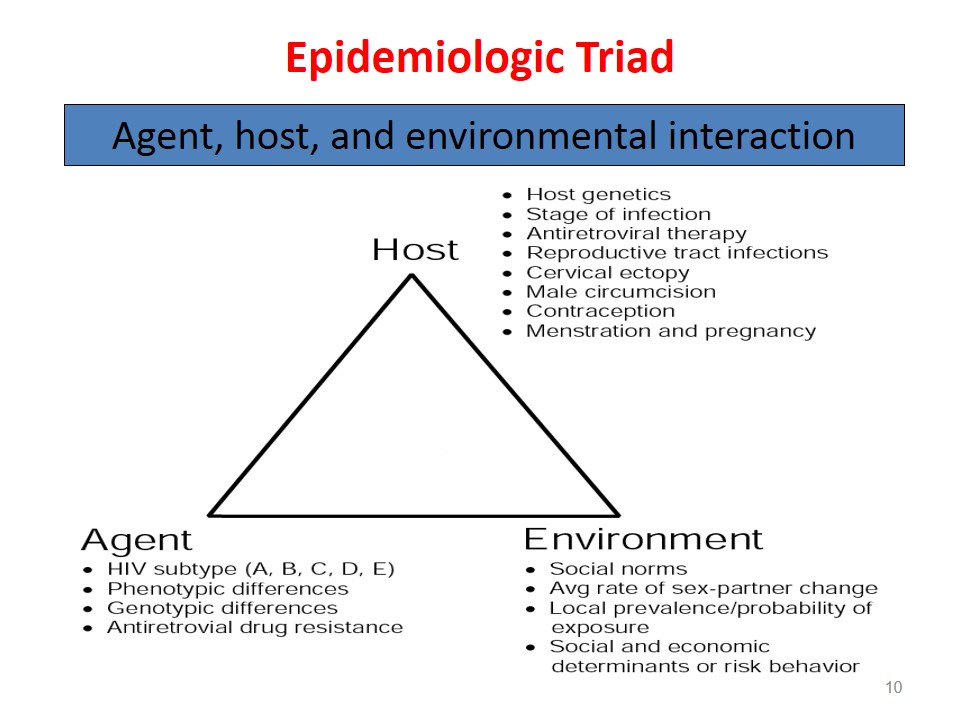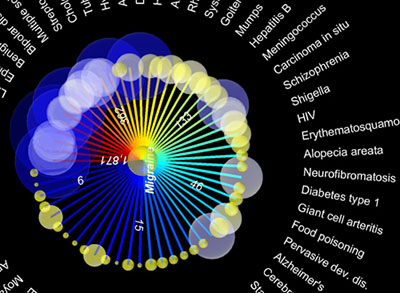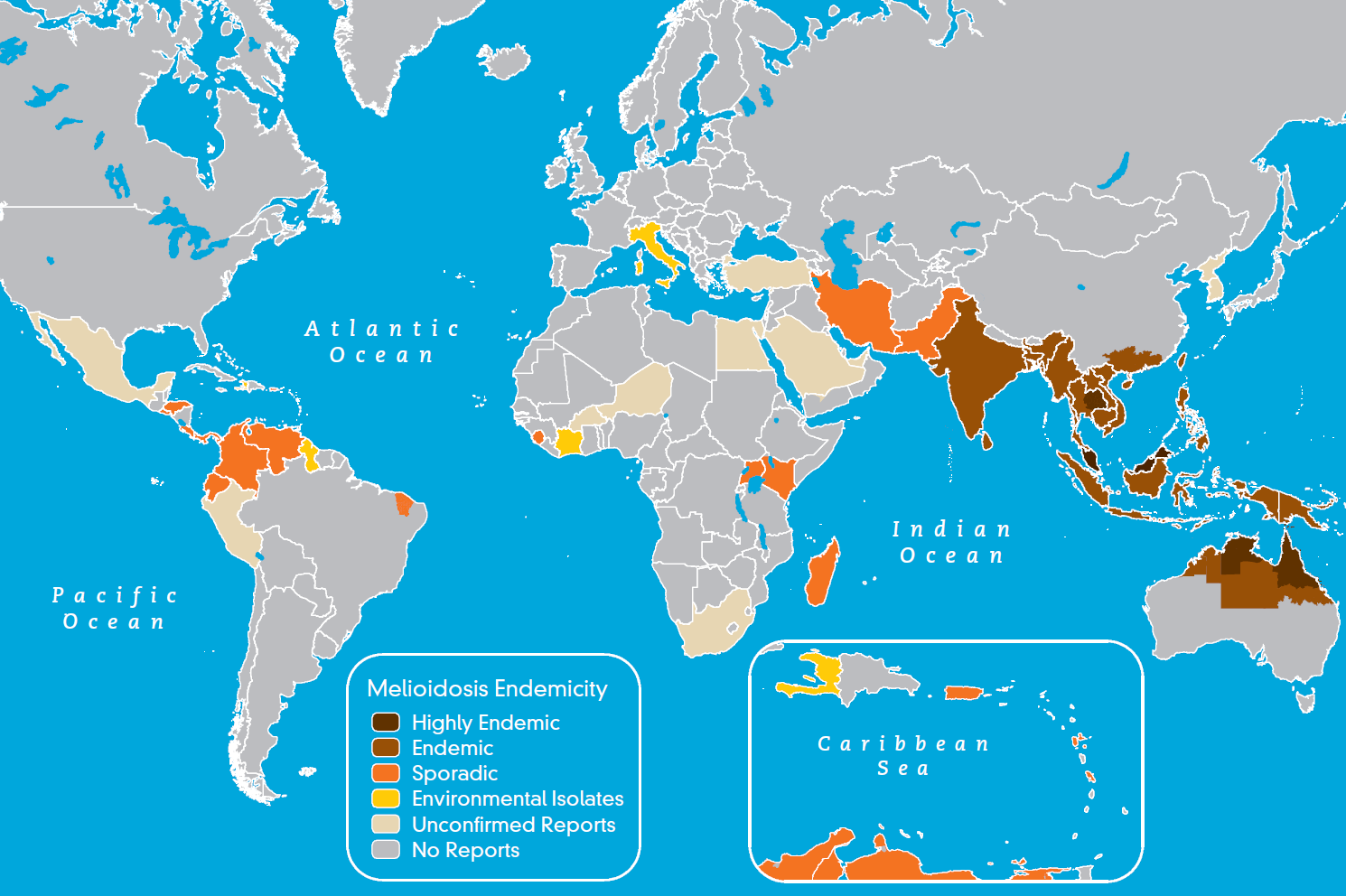CONTROL OF MICROBIAL INFECTIONS
This Post considers some of the options available to help to control the impact of infectious diseases
on populations. The study of diseases within populations is called epidemiology. For microbiologists,
infectious disease epidemiology is an increasingly important area of study as infectious diseases do not
appear to be diminishing in number. The increased mobility of people across the globe has meant that
infectious diseases can be acquired in one part of the world and within hours transported to another. The
movement of micro-organisms will be the same. To keep an eye on the changes in distribution and
numbers of infectious diseases, national centres are required. Within the USA this is based at the Center
for Disease Control (CDC), Atlanta and in the UK, the Central Public Health Laboratory, Colindale,
London. This overview of national trends is part of the surveillance of infectious disease. The reason
that certain infectious diseases must be notified to the public health department is because of the value of
national surveillance in identifying and controlling epidemics.
EPIDEMIOLOGY OF INFECTIOUS DISEASE:
What are the features of micro-organisms that spread as infectious diseases through a community? Classic infectious diseases such as measles can be modelled assuming that the infection is transmitted randomly between infectious and susceptible people. The rate of transmission will be proportional to the product of the number of susceptibles, multiplied by the number of infectious people and is based on the mass action principle. If S is the number of susceptibles and I is the number of infectious people, then the rate of new infections (N) will be the product of the rate of mixing and the concentration of the two components (susceptibles and infected):
N= βSI
Mathematically, the proportional rate of increase means that there must be a constant (β) that moderates
the product. That constant represents the probability of effective transmission. For example, the
efficiency of transmission of hepatitis B virus being transmitted by sneezing is extremely low in
comparison to measles virus, which has a high value of β(closer to one). The transmission coefficient
(β) will vary between micro-organisms and their route of transmission. The other two components I and
S are more direct: the more infectious people (I) or susceptibles (S) there are, the greater the rate of new infections occurring (N).
The number of people directly infected by someone who is infected by a particular micro-organism in an
entirely susceptible population is termed Ro, the basic reproductive rate. Assuming that the infected and susceptibles can mix randomly (homogenous mixing) we can use the mass action principle to define Ro
as the product of the susceptibles (S), the probability of effective transmission (β) and the period of time each case is infectious (D).
Ro=SβD
The equation again shows that increasing any component will increase Ro , e.g. increase the duration of infectiousness and the number of people who become infected per case increases. The conditions
defined here give a numerical value to the incidence of new cases in a population consisting only of
susceptible and infected people, who mix randomly. These conditions are somewhat artificial because
the proportion of people who are immune is not considered, but nevertheless, such values help in
analysing the behaviour of different micro-organisms. Highly infectious diseases like measles have high
values of Ro (around 20) whereas poorly infectious diseases (famously leprosy) have Ro values much closer to 1. Being highly infectious, organisms with high Ro infect people at a younger age than organisms with higher Ro In other words, Ro and average age at infection are inversely related. For the organism, three key limits are predicted:
Ro<1 :the infection declines &disappears from community.
Ro=1: the infection persists,i.e, remains endemic.
Ro>1: the infection will increase in incidence and spread as an endemic.
When an infectious disease with a high Ro such as measles invades a completely susceptible population
(an isolated island community) around 20 new cases arise from every infectious person and a short-lived
epidemic will occur. Fortunately it will burn itself out as the number of susceptibles is quickly
exhausted. The epidemic will occur more rapidly than with an organism of lower Ro since, once infected, people will become immune (or perhaps die), the number of susceptibles falls and the virus
finds fewer and fewer people to infect. This phenomenon is critical in terms of the outbreak. When Ro
< 1, less than one secondary case is produced for each infected individual and the epidemic fades. Thus the
actual or effective reproductive rate(R) falls during the course of an outbreak because the number of
susceptibles that become immune is not replenished. The effective reproductive rate is therefore variable and related to the basic reproductive rate thus: R= Rox where x is the proportion of the population susceptible, e.g. if Ro is 20 and 50 per cent of the population are immune, then Knowing that represents a threshold point below which the epidemic will die out, we have obtained a theoretical minimum number of susceptibles required to maintain the organism within the community. From our equation, this threshold – the numerical density threshold(DT ) – can be predicted by setting Ro predicted by setting Ro to 1.
Therefore: 1/Sβ= DT
DT will be high for organisms with high Ro because they spread so effectively through the population
and therefore need high densities of susceptibles. The outcome of our proposed measles epidemic can therefore be predicted to some extent. The key
parameters in an epidemic are:
• the size of the population, and,
• the rate of new susceptibles appearing.
The epidemic will fade and disappear as R falls to less than unity, but if the population density is high
enough (>DT ) the organism may persist and reappear later as a second epidemic. This pattern may repeat
and give epidemics every couple of years, following the oscillation of R around unity. The
length of time between epidemics will depend on the arrival of new susceptibles (such as births or
migrations). Should all organisms seek a high Ro ? Not necessarily. Microbes with high Ro run the risk of quickly eliminating all potential hosts as they sweep through the community. They may be viewed as too effective, but in large, dense cities this strategy is workable. More patient strategies are needed if the population is sparse. Production of robust and long-living infective forms is one option. Bacterial endospores are a good example. Viruses are less well equipped to cope with long periods outside a host and some have adopted vertical transmission as the ultimate adaptation to ensuring the transmission of the organism when low-density populations exist (e.g. chronic Hepatitis B infection).
RECOMMENDED READING
Ciba Foundation Symposium, Number 207 (1997) Antibiotic Resistance: Origins, Evolution, Selection
and Spread, Wiley, Chichester, UK.
Davies, J. (1994) Inactivation of antibiotics and the dissemination of resistance genes. Science 264,
375–82.
Nikaido, H. (1994) Prevention of drug access to bacterial targets: permeability barriers and drug
efflux. Science 264, 382–8.
Noah, N. and O’Mahony, M. (eds) (1998) Communicable Disease Epidemiology and Control, John
Wiley & Sons Ltd, Chichester, UK.
Nokes, D.J. and Anderson, R.M. (1988) The use of mathematical models in the epidemiological
study of infectious diseases and in the design of mass immunisation programmes. Epidemiol. Infect.
101, 1–20. Spratt, B.G. (1994) Resistance to antibiotics mediated by target alterations. Science 264, 388–93.
Cited By Kamal Singh Khadka
Msc Microbiology, TU.
Assistant Professor In PU, PBPC, PNC, LA, NA.
Pokhara, Nepal.
SOME SUGGESTED REFERENCES:
ocw.jhsph.edu/index.cfm/go/viewCourse/.../EpiInfectiousDisease/.../inde...
ocw.jhsph.edu/courses/EpiInfectiousDisease/lectureNotes.cfm
www.jhsph.edu › Departments › Epidemiology › Tracks
www.mailman.columbia.edu › Epidemiology › Research & Service
www.ncbi.nlm.nih.gov › ... › v.60(3); Mar 2006
www.lshtm.ac.uk › EPH › IDE
www.imperial.ac.uk/medicine/dide
www.infectioncontroltoday.com/topics/microbes.aspx
www.ncbi.nlm.nih.gov/pubmed/19535879
en.wikipedia.org/wiki/Infection
.
on populations. The study of diseases within populations is called epidemiology. For microbiologists,
infectious disease epidemiology is an increasingly important area of study as infectious diseases do not
appear to be diminishing in number. The increased mobility of people across the globe has meant that
infectious diseases can be acquired in one part of the world and within hours transported to another. The
movement of micro-organisms will be the same. To keep an eye on the changes in distribution and
numbers of infectious diseases, national centres are required. Within the USA this is based at the Center
for Disease Control (CDC), Atlanta and in the UK, the Central Public Health Laboratory, Colindale,
London. This overview of national trends is part of the surveillance of infectious disease. The reason
that certain infectious diseases must be notified to the public health department is because of the value of
national surveillance in identifying and controlling epidemics.
EPIDEMIOLOGY OF INFECTIOUS DISEASE:
What are the features of micro-organisms that spread as infectious diseases through a community? Classic infectious diseases such as measles can be modelled assuming that the infection is transmitted randomly between infectious and susceptible people. The rate of transmission will be proportional to the product of the number of susceptibles, multiplied by the number of infectious people and is based on the mass action principle. If S is the number of susceptibles and I is the number of infectious people, then the rate of new infections (N) will be the product of the rate of mixing and the concentration of the two components (susceptibles and infected):
N= βSI
Mathematically, the proportional rate of increase means that there must be a constant (β) that moderates
the product. That constant represents the probability of effective transmission. For example, the
efficiency of transmission of hepatitis B virus being transmitted by sneezing is extremely low in
comparison to measles virus, which has a high value of β(closer to one). The transmission coefficient
(β) will vary between micro-organisms and their route of transmission. The other two components I and
S are more direct: the more infectious people (I) or susceptibles (S) there are, the greater the rate of new infections occurring (N).
The number of people directly infected by someone who is infected by a particular micro-organism in an
entirely susceptible population is termed Ro, the basic reproductive rate. Assuming that the infected and susceptibles can mix randomly (homogenous mixing) we can use the mass action principle to define Ro
as the product of the susceptibles (S), the probability of effective transmission (β) and the period of time each case is infectious (D).
Ro=SβD
The equation again shows that increasing any component will increase Ro , e.g. increase the duration of infectiousness and the number of people who become infected per case increases. The conditions
defined here give a numerical value to the incidence of new cases in a population consisting only of
susceptible and infected people, who mix randomly. These conditions are somewhat artificial because
the proportion of people who are immune is not considered, but nevertheless, such values help in
analysing the behaviour of different micro-organisms. Highly infectious diseases like measles have high
values of Ro (around 20) whereas poorly infectious diseases (famously leprosy) have Ro values much closer to 1. Being highly infectious, organisms with high Ro infect people at a younger age than organisms with higher Ro In other words, Ro and average age at infection are inversely related. For the organism, three key limits are predicted:
Ro<1 :the infection declines &disappears from community.
Ro=1: the infection persists,i.e, remains endemic.
Ro>1: the infection will increase in incidence and spread as an endemic.
When an infectious disease with a high Ro such as measles invades a completely susceptible population
(an isolated island community) around 20 new cases arise from every infectious person and a short-lived
epidemic will occur. Fortunately it will burn itself out as the number of susceptibles is quickly
exhausted. The epidemic will occur more rapidly than with an organism of lower Ro since, once infected, people will become immune (or perhaps die), the number of susceptibles falls and the virus
finds fewer and fewer people to infect. This phenomenon is critical in terms of the outbreak. When Ro
< 1, less than one secondary case is produced for each infected individual and the epidemic fades. Thus the
actual or effective reproductive rate(R) falls during the course of an outbreak because the number of
susceptibles that become immune is not replenished. The effective reproductive rate is therefore variable and related to the basic reproductive rate thus: R= Rox where x is the proportion of the population susceptible, e.g. if Ro is 20 and 50 per cent of the population are immune, then Knowing that represents a threshold point below which the epidemic will die out, we have obtained a theoretical minimum number of susceptibles required to maintain the organism within the community. From our equation, this threshold – the numerical density threshold(DT ) – can be predicted by setting Ro predicted by setting Ro to 1.
Therefore: 1/Sβ= DT
DT will be high for organisms with high Ro because they spread so effectively through the population
and therefore need high densities of susceptibles. The outcome of our proposed measles epidemic can therefore be predicted to some extent. The key
parameters in an epidemic are:
• the size of the population, and,
• the rate of new susceptibles appearing.
The epidemic will fade and disappear as R falls to less than unity, but if the population density is high
enough (>DT ) the organism may persist and reappear later as a second epidemic. This pattern may repeat
and give epidemics every couple of years, following the oscillation of R around unity. The
length of time between epidemics will depend on the arrival of new susceptibles (such as births or
migrations). Should all organisms seek a high Ro ? Not necessarily. Microbes with high Ro run the risk of quickly eliminating all potential hosts as they sweep through the community. They may be viewed as too effective, but in large, dense cities this strategy is workable. More patient strategies are needed if the population is sparse. Production of robust and long-living infective forms is one option. Bacterial endospores are a good example. Viruses are less well equipped to cope with long periods outside a host and some have adopted vertical transmission as the ultimate adaptation to ensuring the transmission of the organism when low-density populations exist (e.g. chronic Hepatitis B infection).
RECOMMENDED READING
Ciba Foundation Symposium, Number 207 (1997) Antibiotic Resistance: Origins, Evolution, Selection
and Spread, Wiley, Chichester, UK.
Davies, J. (1994) Inactivation of antibiotics and the dissemination of resistance genes. Science 264,
375–82.
Nikaido, H. (1994) Prevention of drug access to bacterial targets: permeability barriers and drug
efflux. Science 264, 382–8.
Noah, N. and O’Mahony, M. (eds) (1998) Communicable Disease Epidemiology and Control, John
Wiley & Sons Ltd, Chichester, UK.
Nokes, D.J. and Anderson, R.M. (1988) The use of mathematical models in the epidemiological
study of infectious diseases and in the design of mass immunisation programmes. Epidemiol. Infect.
101, 1–20. Spratt, B.G. (1994) Resistance to antibiotics mediated by target alterations. Science 264, 388–93.
Cited By Kamal Singh Khadka
Msc Microbiology, TU.
Assistant Professor In PU, PBPC, PNC, LA, NA.
Pokhara, Nepal.
SOME SUGGESTED REFERENCES:
ocw.jhsph.edu/index.cfm/go/viewCourse/.../EpiInfectiousDisease/.../inde...
ocw.jhsph.edu/courses/EpiInfectiousDisease/lectureNotes.cfm
www.jhsph.edu › Departments › Epidemiology › Tracks
www.mailman.columbia.edu › Epidemiology › Research & Service
www.ncbi.nlm.nih.gov › ... › v.60(3); Mar 2006
www.lshtm.ac.uk › EPH › IDE
www.imperial.ac.uk/medicine/dide
www.infectioncontroltoday.com/topics/microbes.aspx
www.ncbi.nlm.nih.gov/pubmed/19535879
en.wikipedia.org/wiki/Infection
.







Comments